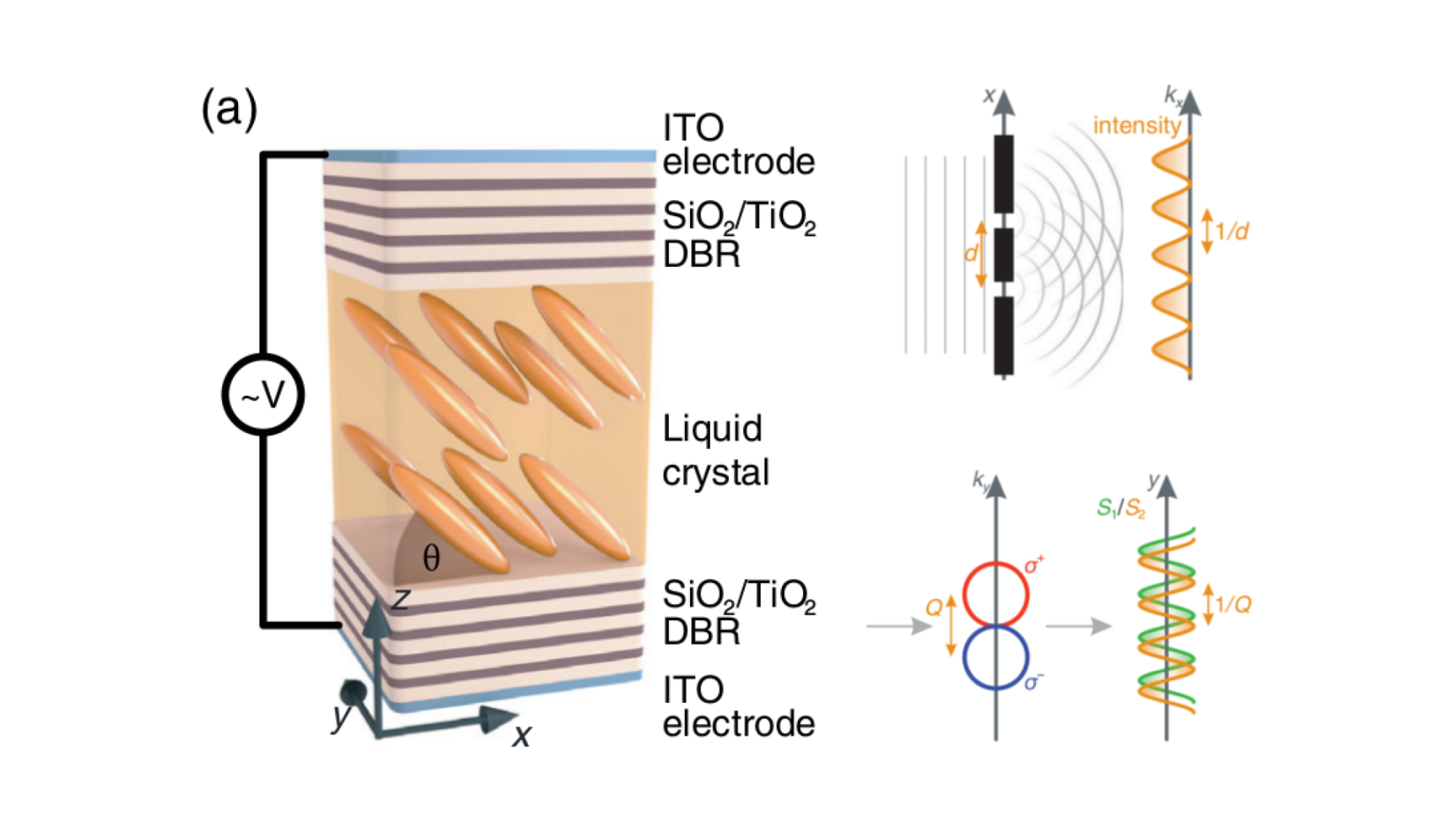Scientists for the first time demonstrated Young's experiment for photons in the reciprocal space.
Spin patterns corresponding to the persistent spin helix and the Stern-Gerlach experiment are realized in an optically anisotropic liquid crystal microcavity. By applying electric voltage across the microcavity, the liquid crystal molecules inside could be rotated in such a way that the light passing through the cavity was forced to change its internal state into right- and left-handed circular polarized components.
Young's experiment from almost 220 years ago shows that when light passes through two slits in a plate it undergoes diffraction that creates an image composed of many fringes (the so-called interference image). The closer the slits are to each other, the further the interference fringes are separated. In this way, the two slits transform information about the light from position space into the so-called “reciprocal space” – the space of directions. Changing the distance between the slits changes the angle (and thus direction) at which the light is diffracted. Since 1801, Young's experiment has been carried out not only with light, but also with electrons, atoms and even large molecules.
It turns out that a similar experiment can be also performed in reciprocal space where light beams emitted in two opposite directions should also lead to a periodic pattern in position space.
In an article "Realizing Optical Persistent Spin Helix and Stern-Gerlach Deflection in an Anisotropic Liquid Crystal Microcavity" scientists from Institute of Physics Polish Academy of Sciences, the University of Warsaw, the Military University of Technology in Warsaw, and the University of Southampton, Mateusz Król, Katarzyna Rechcińska, Helgi Sigurdsson, Przemysław Oliwa, Rafał Mazur, Przemysław Morawiak, Wiktor Piecek, Przemysław Kula, Pavlos G. Lagoudakis, Michał Matuszewski, Witold Bardyszewski, Barbara Piętka, and Jacek Szczytko for the first time demonstrated Young's experiment for photons in the reciprocal space. For this purpose, an optical microcavity filled with a liquid crystal was prepared. The microcavity consists of two partially transparent parallel mirrors located such that a standing electromagnetic wave is formed inside the cavity. By applying electric voltage across the microcavity, the liquid crystal molecules inside could be rotated in such a way that linearly polarized plane wave light passing through the cavity was split into right- and left-handed circular polarized components that deflected in opposite directions from the original beam path.
It was similar to the situation of Young's experiment - this time, however, the role of slits was played by two distinguished directions of light in the "reciprocal space". Outside the cavity - that is, on the "position space" - an interference pattern of light polarization was observed, composed of linearly polarized stripes. Previously, a similar phenomenon was observed for electrons - modulation of the polarization of spins of electrons in position space led to the formation of the so-called persistent spin helix. It turned out that experiment in the liquid crystal microcavity led to the same mathematical description of such a helix for the electron spin and for the polarization of light. Authors interpreted this phenomenon as a classic analog of the entanglement of two degrees of freedom - the direction and polarization of light.
The observation that the induced optical properties of the microcavity with a liquid crystal, in a way, separate the “spin” of light - with the circular polarization playing the role of the spin - almost coincided with the 100th anniversary of the discovery of spin in the famous experiment of Stern and Gerlach in 1922. Thus, in one work, an optical analogy of two fundamental experiments of quantum mechanics were observed. The work was distinguished by the editor and is included in the prestigious group of articles "Physical Review Letters, Editors' Suggestion" as: Phys. Rev. Lett. 127, 190401 (2021).
